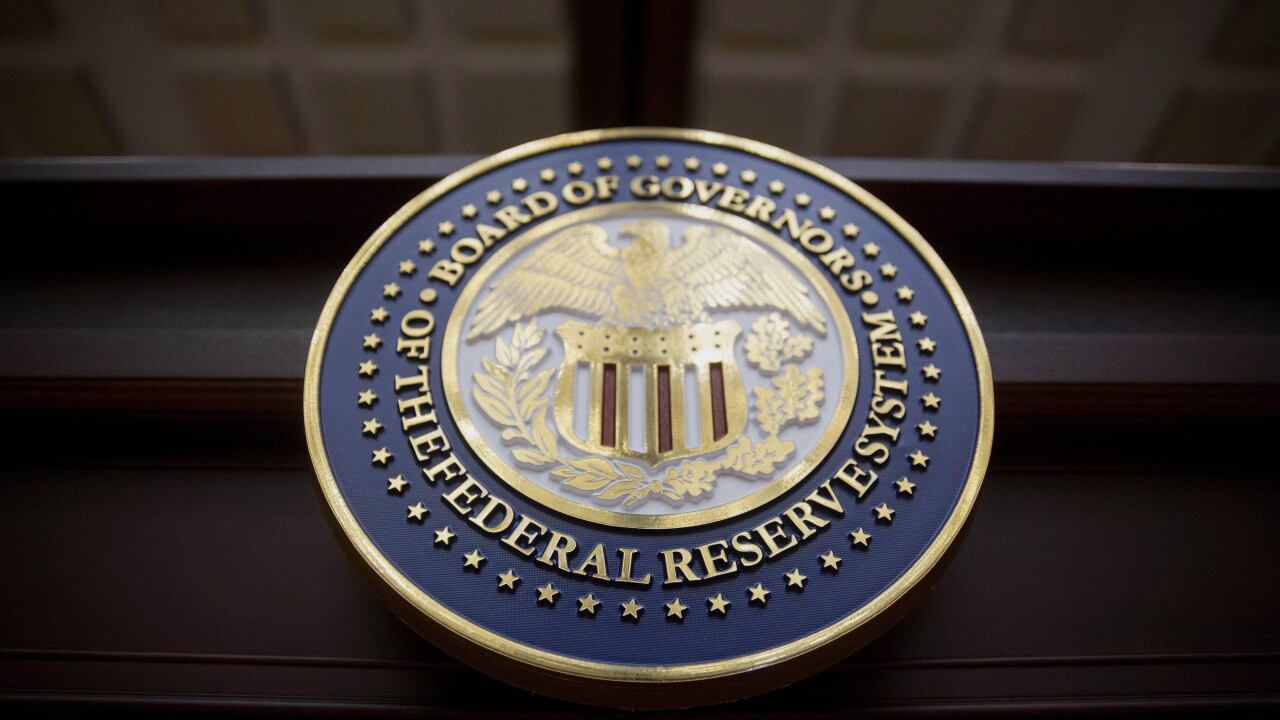-
Marketplace lenders are seizing on current investor enthusiasm after the December public listing of LendingClub. SoFi and Funding Circle have set new origination targets, and new capital markets deals may help replace bank credit lines for Blue Elephant Capital Management and perhaps others.
January 28 -
WASHINGTON The Consumer Financial Protection Bureau took action Thursday against two companies for allegedly running "scams" that promised relief for struggling student loan borrowers.
December 11 -
Wells Fargo plans to sell an $8.5 billion portfolio of federal student loans to Navient, the educational loan servicer that recently split off from Sallie Mae.
November 13 -
In signing off on the new "liquidity coverage ratio," Federal Reserve Board officials provided a strong signal that the regulatory work on liquidity standards is just getting started.
September 5
Bank of America is poised to exit its student loan portfolio, as banks reduce their red-tape-heavy assets and redeploy cash to create loan growth elsewhere.
But like many banks divesting from federally guaranteed student loans, it's just as possible someday the bank will repurchase securities backed by the same collateral.
B of A's chief financial officer, Bruce Thompson, told analysts on an earnings call last month that it moved a $2.7 billion portfolio of consumerloans into held-for-sale status.
The entire portfolio consists of federally guaranteed student loans made under the Federal Family Education Loan Program, according to an official at the bank who was not authorized to speak publicly on the matter. The federal government has been winding down the program since 2010.
"We are looking to sell the whole FFELP portfolio," the person said.
The two strongest and most competitively positioned bidders may be Nelnet, which last year
Navient has accelerated its pace of acquisitions and is widely expected to bid on the Bank of America portfolio. It added $9.5 billion in FFELP loans to its own portfolio last quarter, versus $11.3 billion acquired over the full year. Together, Navient and Nelnet have the largest portfolios of FFELP assets at $100 billion and $27 billion, respectively.
The driving factor pushing banks to sell is the need for banks to redeploy cash flows into other lending opportunities that are showing stronger demand as the economy improves, Navient Chief Executive Jack Remondi said during the company's earnings call last month.
"The regulatory environments, as they are associated with consumer assets in the student-loan space, as well as [banks'] obligations to oversee third-party vendors, are the principal drivers there," he said.
Navient, which
Wells Fargo's portfolio was until the November transaction the largest bank-held pool of FFELP in the market. In theory, Wells and Bank of America could end up with decent-yielding exposures to the collateral once again.
Securitization, the process of sourcing assets and bundling them into securities, is a circular business even after
Banks are the largest buyer type of student loan securitizations, purchasing 70% of all FFELP asset-backed securities last year, according to JPMorgan Securities. FFELP deals do not qualify as "high quality liquid assets" under the liquidity coverage ratio, and that has reduced banks' appetite for them, but they have shown little desire to sell what they are already holding. They instead are selling out the more liquid auto paper, while retaining the student loan notes.
Private student loans are also highly attractive to investors. They offer up to four times the return as FFELP loans. Sallie Mae, for example, may securitize $1.5 billion in assets this year, first in late March or early April, CFO Steve McGarry said during earnings calls.
The supply of FFELP in the market remains substantial despite Congress' termination of new FFELP loans after June 30, 2010, but it is winding down.
There may be as much as $223 billion left in FFELP loans outstanding, according to Compass Point Research & Trading.
In securitized student loans, supply outstanding roughly equals that of securitized auto loans, each around $180 billion. Total student loan debt now exceeds $1.2 trillion nationwide.





